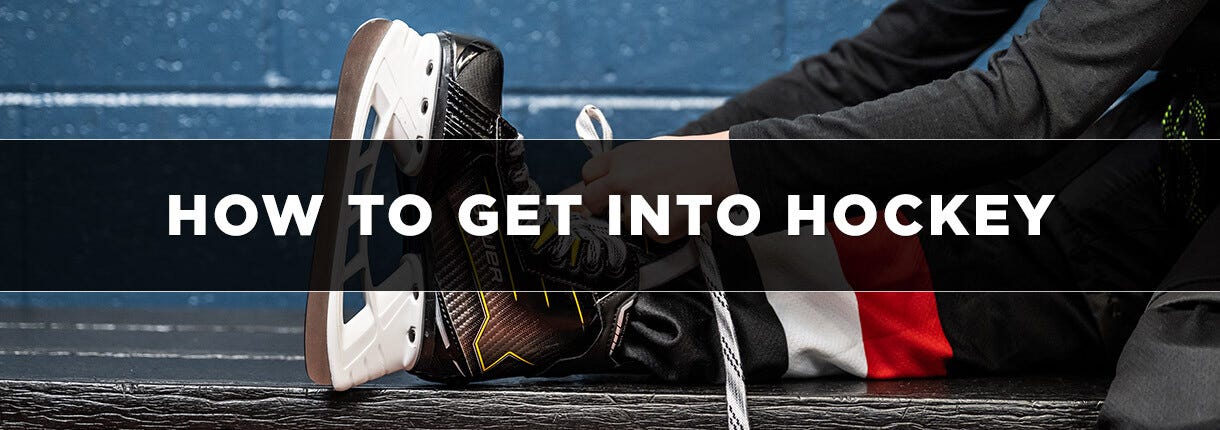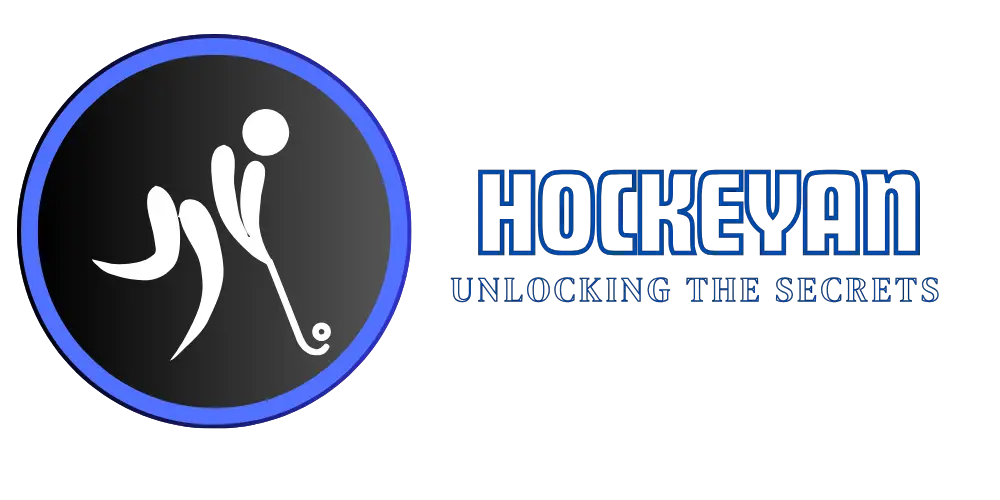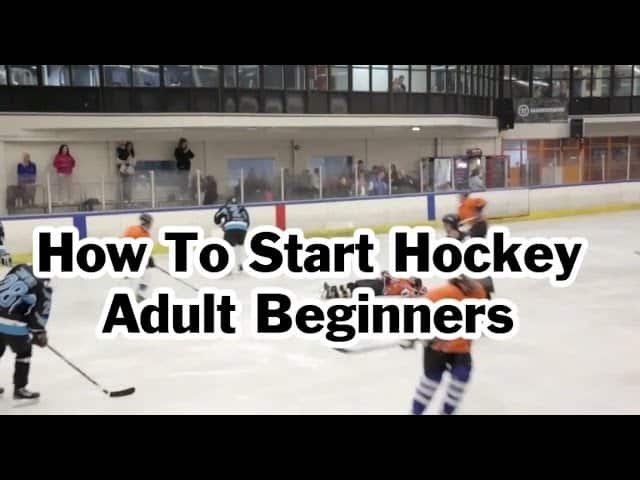Hockey is an exciting and fast-paced sport. It can be thrilling to watch and even more fun to play.
So, how do you get started in hockey? Let’s dive into the basics and help you find your path into this exhilarating world. Hockey, whether on ice or in a field, offers a unique blend of speed, skill, and strategy.
It’s a sport that builds teamwork, endurance, and sharp reflexes. For beginners, understanding the fundamentals is key. You’ll need the right equipment, basic skills, and knowledge of the game’s rules. Whether you’re young or young at heart, getting into hockey can be a rewarding journey. This guide will outline everything you need to start your hockey adventure. From choosing the right gear to joining a team, we’ve got you covered. Let’s get you on the path to becoming a hockey player.
Getting Started With Hockey
Getting started with hockey can be both exciting and overwhelming. With the right guidance, you can smoothly transition into this thrilling sport. This section will help you understand the basics of getting started in hockey.
Essential Gear
To play hockey, you need specific gear. The most important is a good pair of skates. Skates give you speed and control on the ice. A well-fitted helmet protects your head. Wear it every time you play. You also need pads. These include shoulder pads, elbow pads, and shin guards. They protect you from falls and hits. Don’t forget gloves. They protect your hands and provide grip. A hockey stick is also essential. Choose one that fits your height and playing style. Lastly, mouthguards protect your teeth. Wear one to prevent injuries.
Finding The Right Team
Finding a team can enhance your hockey experience. Start by looking for local hockey clubs. Many communities have clubs for beginners. Joining a club helps you learn and improve. Check for beginner leagues. These leagues are perfect for new players. They provide a supportive environment. Talk to coaches. They can guide you to the right team. Attend practice sessions. It helps you understand the team’s dynamics. Finally, make sure you enjoy the team culture. A good fit makes your hockey journey enjoyable.
Basic Rules And Regulations
Understanding the basic rules and regulations of hockey helps you enjoy the game. This section will cover the structure of a game, common penalties, and infractions. Knowing these will help you follow and appreciate the sport more.
Game Structure
Hockey games are divided into three periods. Each period lasts 20 minutes. The team with the most goals at the end wins. In case of a tie, teams play overtime. If still tied, a shootout decides the winner.
Each team has six players on the ice: one goalie, two defensemen, and three forwards. The goalie protects the net. Defensemen try to stop the opponent’s forwards. Forwards aim to score goals.
| Position | Role |
|---|---|
| Goalie | Protects the goal |
| Defensemen | Stops opponents |
| Forwards | Scores goals |
Penalties And Infractions
Penalties occur for breaking the rules. Common penalties include:
- Tripping: Using a stick to make an opponent fall.
- Hooking: Using a stick to slow down an opponent.
- Slashing: Hitting an opponent with a stick.
Players serve penalties in the penalty box. Minor penalties last two minutes. Major penalties last five minutes. While a player is in the penalty box, their team plays short-handed.
Infractions like offside and icing stop the game. Offside happens when a player enters the offensive zone before the puck. Icing occurs when a player shoots the puck across the opponent’s goal line without it being touched. The game stops and a faceoff takes place.
Understanding these rules will make watching hockey more enjoyable. You’ll recognize key moments and understand the reasons behind game stoppages and penalties.
Fundamental Skills
Getting into hockey requires learning some fundamental skills. These skills form the foundation of your hockey journey. Mastery of these basics will make you a better player. Let’s explore two key areas: skating techniques and handling the puck.
Skating Techniques
Skating is the most important skill in hockey. Start with learning how to balance on skates. Practice gliding on one foot. This helps you build stability. Then, focus on forward and backward skating. Bend your knees slightly and keep your back straight. Push off with the inner edges of your skates. Make sure to practice stopping. Use the snowplow stop or the hockey stop. Consistent practice will improve your speed and agility on the ice.
Handling The Puck
Handling the puck is essential for controlling the game. Begin with basic stickhandling drills. Use a soft grip on your stick. This allows for better control. Practice moving the puck side to side. Keep your head up to watch the game. Work on passing and receiving the puck. Use both forehand and backhand passes. Finally, practice shooting. Aim for accuracy before power. Regular practice will enhance your puck-handling skills.

Credit: discover.hubpages.com
Training And Practice
Training and practice are essential for anyone looking to get into hockey. Improving skills and building endurance requires dedication both on and off the ice. This section will cover key activities that can help you enhance your performance in hockey.
Off-ice Exercises
Off-ice exercises are crucial for building strength, agility, and endurance. Focus on these key areas:
- Strength Training: Use weights and resistance bands to build muscle. Target legs, core, and upper body.
- Cardio: Engage in running, cycling, or swimming to boost endurance.
- Flexibility: Incorporate stretching routines to improve flexibility and reduce injury risk.
Consider creating a weekly schedule:
| Day | Activity |
|---|---|
| Monday | Strength Training |
| Tuesday | Cardio |
| Wednesday | Flexibility |
| Thursday | Strength Training |
| Friday | Cardio |
| Saturday | Rest |
| Sunday | Flexibility |
On-ice Drills
On-ice drills are designed to improve your skating, stickhandling, and shooting skills. Practice the following:
- Skating Drills: Work on forward and backward skating. Include crossovers and stops.
- Stickhandling: Use pucks and cones to enhance control and dexterity.
- Shooting: Practice wrist shots, slap shots, and backhands. Aim for accuracy and power.
Joining a local hockey team can provide structured practice sessions. This will help you learn from experienced players and coaches.
Joining The Community
Getting involved in hockey can be exciting and rewarding. One of the best ways to immerse yourself in the sport is by joining the community. Connecting with others who share your passion can enhance your experience and provide valuable support. This section will explore how to become part of the hockey community.
Local Leagues And Clubs
Local leagues and clubs offer a great entry point into the hockey community. These organizations provide opportunities to play, learn, and grow. Find a nearby league or club to join. Many have beginner programs to help you get started. You can meet new friends who share your interests.
Participating in local events can also be rewarding. Attend games, tournaments, and social gatherings. These events help you connect with other players and fans. Volunteering can also be a great way to get involved. Many clubs need help with coaching, organizing events, and other tasks.
Online Resources And Forums
Online resources and forums are valuable tools for connecting with the hockey community. Many websites offer tips, tutorials, and advice for new players. You can find information on everything from equipment to techniques. Forums and social media groups are great places to ask questions and share experiences.
Joining online communities allows you to connect with people worldwide. You can learn from more experienced players and coaches. These connections can provide motivation and support. They can also help you stay up-to-date with the latest news and trends in hockey.

Credit: www.hockeymonkey.com

Credit: www.crossicehockey.com
Frequently Asked Questions
What Equipment Do I Need For Hockey?
You need skates, a stick, helmet, gloves, pads, and a puck.
How Can I Start Learning Hockey Skills?
Join a beginner’s class or team to learn basic skills.
Where Can I Find Local Hockey Leagues?
Search online for local hockey leagues or ask at nearby rinks.
How Much Does It Cost To Play Hockey?
Costs vary. Equipment, league fees, and ice time can add up.
What Age Is Best To Start Playing Hockey?
Kids can start as young as four or five, but any age is fine.
How Often Should I Practice Hockey?
Practice at least two to three times a week to improve skills.
What Are The Basic Rules Of Hockey?
Basic rules include no high-sticking, offsides, and penalties for rough play.
How Can I Improve My Skating For Hockey?
Practice regularly, take lessons, and focus on balance and speed.
Are There Beginner Hockey Programs For Adults?
Yes, many rinks offer beginner programs for adults to learn and play.
Conclusion
Getting into hockey is easier than you think. Start with basic gear and find a local team. Practice regularly. Watch games to understand strategies. Stay patient and enjoy the process. Hockey is fun and exciting. Soon, you’ll be comfortable on the ice.
Remember, every player started as a beginner. Enjoy your hockey journey!



